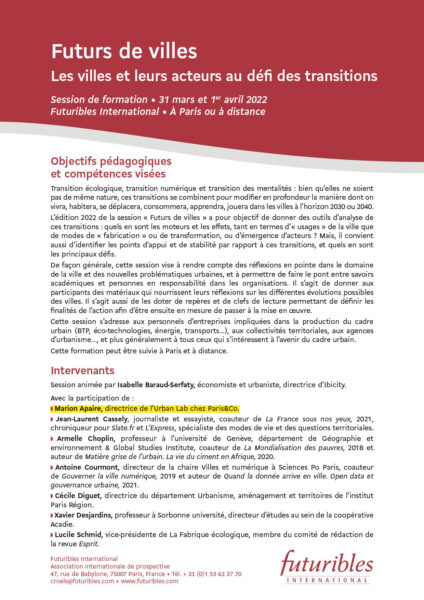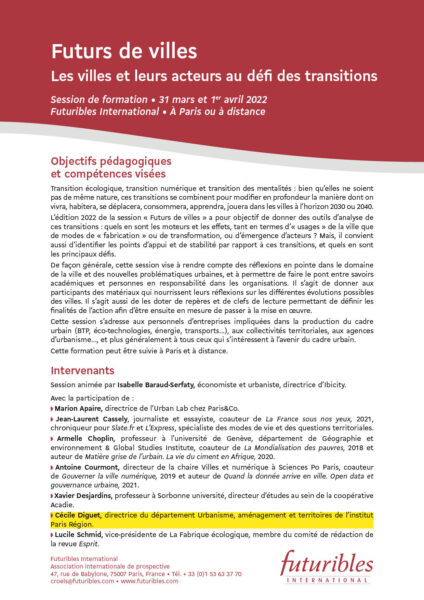In France, cities and the infrastructure and services structuring them have always been “free” (in the sense that access has not required payment at the point of use) or cheap (charged at a rate far below their real cost), as Isabelle Baraud-Serfaty reminds us at the beginning of this article. Nevertheless, this free provision, which users of cities enjoy, is the product of an economic model funded mainly from taxes (and tax payers) and capital gains (paid by the end-owners of property), a model which, she argues, is currently under threat. The crisis of the public finances, the fact that value-creation is proceeding more slowly as cities are increasingly renewed “out of themselves”, a shift in mentalities away from things systematically being free and a change of scale in the production of various urban goods and services represent the four main threats to the “free” city identified by Isabelle Baraud-Serfaty.
However, information technologies and the digital revolution they have spawned show that new economic models are emerging, which could give a new meaning to the notion of towns and cities being “free”: the freemium model, two-sided or multi-sided models, the “load management” model, para-market models etc. As the author shows, various innovative economic models have appeared in recent years and could find applications in towns and cities, enabling a re-think about the connection between, on the one hand, the demands and needs of users and, on the other, the provision and responses forthcoming from public services and from other city operators (including private ones) or even from the users themselves. We are indeed at the dawn of the era of the smart city, but defining its shape and the ways it will be financed is still very much a work in progress.



